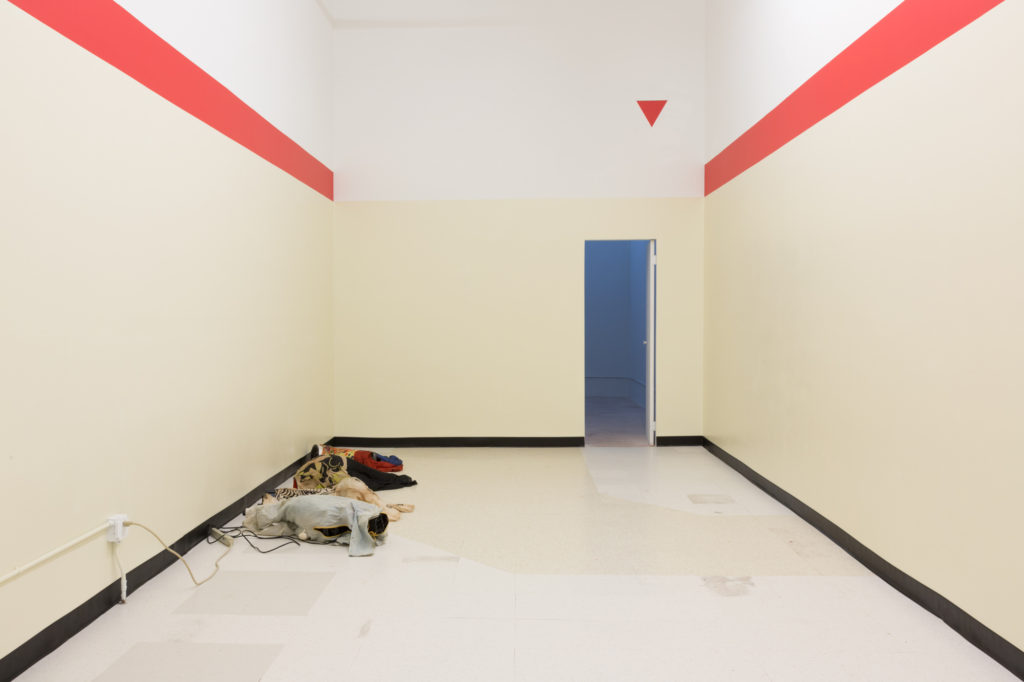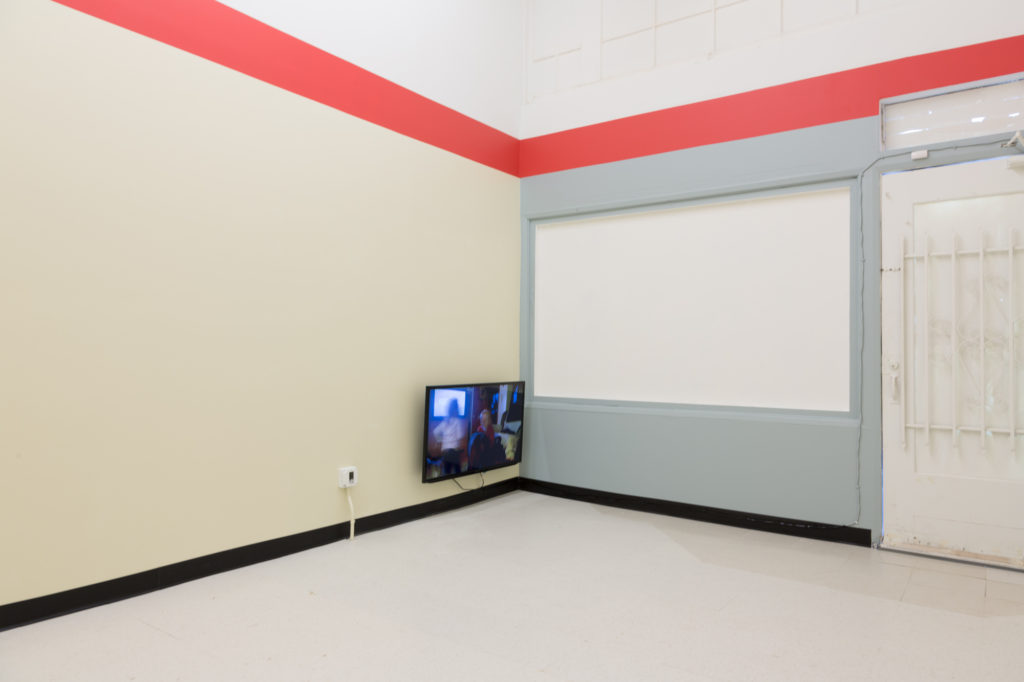One of the many visual markers regarding the decline of the working middle class in America is the painfully slow and public death of K-mart. Lilac is an immersive installation recreating the interior of the discount department store circa the late 1980s by Detroit-based artist Tony Hope at San Francisco’s Jessica Silverman Gallery, running June 24 to July 23. It’s titled in part for the flower that grew in Hope’s childhood backyard, while the phonetic basis ‘lie’ and ‘lack’ set the bidirectional ground work for the exhibition as a whole.
Lilac is cast as a personal snapshot of Hope’s early life growing up in Detroit unaware of his family’s socioeconomic limitations. Though self-admittedly personal, the larger context surrounding wealth disparity offers a very reachable experience spanning several decades, allowing his work a wider context. Within the installation are subtle clues regarding perceived imperfections that challenge a sense of financial security and its misappropriated regularity, especially as it appeared in Hope’s family lineage.

The installation is barren with the exception of four floor-based sculptures consisting of children’s Halloween costumes from the 1960s, each outfitted on a modified vacuum, a video monitor on loop, and very soft audio coming from a wall in the back room. The pieces are all named after the character they represent (clown, cat, skeleton, bugs) and are notably distressed by age, coming to life with the assistance of a vacuum motor virtually ‘breathing’ life into the cloth limbs. The scorched fabric, in some areas literally affixed by heat to the vacuum itself, imparts the notion of a social identity fused with financial standing.
Each of the elements in the exhibition are arranged to remove any current sense of time and place, interjecting a world that hinges on the fringe of reality. The sparse approach relies on this unease, delivering most of the work in Lilac through meticulous wall and floor treatments in which Hope installed identical vinyl composition tiles in a selection of oyster and beige tones, as seen in K-mart during the late 1980s. Using the variation in shades to mimic the aisle in opposition to the display areas that K-mart also used the color differential for, Hope creates a pathway from one gallery wall walking into another. The floor tiles are selectively scuffed or treated with a soda, and visually offset in some areas.
Aiding visual direction is a specifically directional wall paint application in contrasting shades of eggshell, red, and dusky blue, coupled with a jarring black rubber baseboard trim. Noted as immolating the basics of a retail layout, the direction leads into a dark, empty room with two holes in the wall emitting audio of a very soft volume. The loop is taken from a segment of K-mart soundtracks dated October 1989. Playing instrumental muzak to innocuous contemporary adult, the audio is occasionally interrupted by sales broadcasts asking the listener to stop by the men’s department for “shaker knits and cotton jacquards”. Masked as a visual conduit, Hope leads the viewer into a space of nearing nothingness, which can be interpreted as the final act within said reality on the margins.

The single video in Lilac presents this analysis in its most literal form. The single channel video ‘Raindrops’ (2016) is a 39-second loop featuring Hope’s mother and young niece in a suburban living room singing along to the Burt Bacharach song ‘Raindrops Keep Falling on My Head’. In the background a muted TV monitor screens various commercials including the apocalyptic VR-based Hot Pockets (microwaveable pizza bites) commercial ‘Hunger Can’t Kill Your Game’, while the family dog wags its tail in concert with a nearby mechanical toy duck holding an umbrella and tilting back and forth. Further in the distance are two American flags, one as door décor and one waving in the wind, seen from the front door left slightly ajar.
The loaded iconography and timing of all the factors in ‘Raindrops’ come together manically. As the song imposes a simple lightness broaching an abbreviated resistance towards the harsh reality of life, the backdrop suggests something vastly different in a world of equal delusion, on par in aggression and distraction: a never ending cycle of reactive factors advocating desperately for some previously vetted utopia. The ability to elicit such precise feeling locked in time with such specific gravity is the masterful effect Hope imbues in the installation.
The artist’s work brings attention to typified coping mechanisms put into place by individuals to inform the fallout seen in the remaining work he pairs alongside it. If Lilac were to be viewed as a storyline, it would present life working in reverse: the future as informing the present.**













